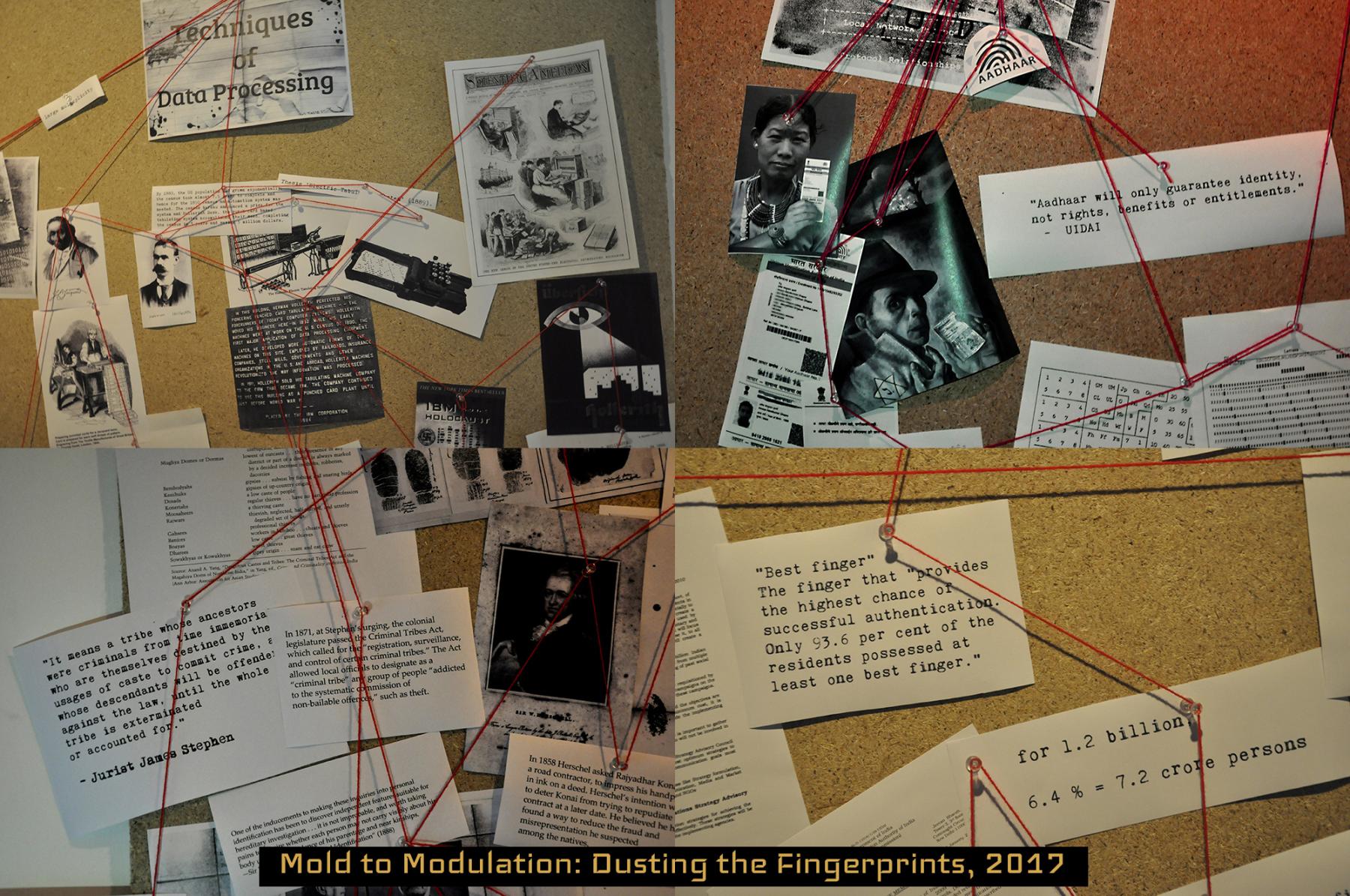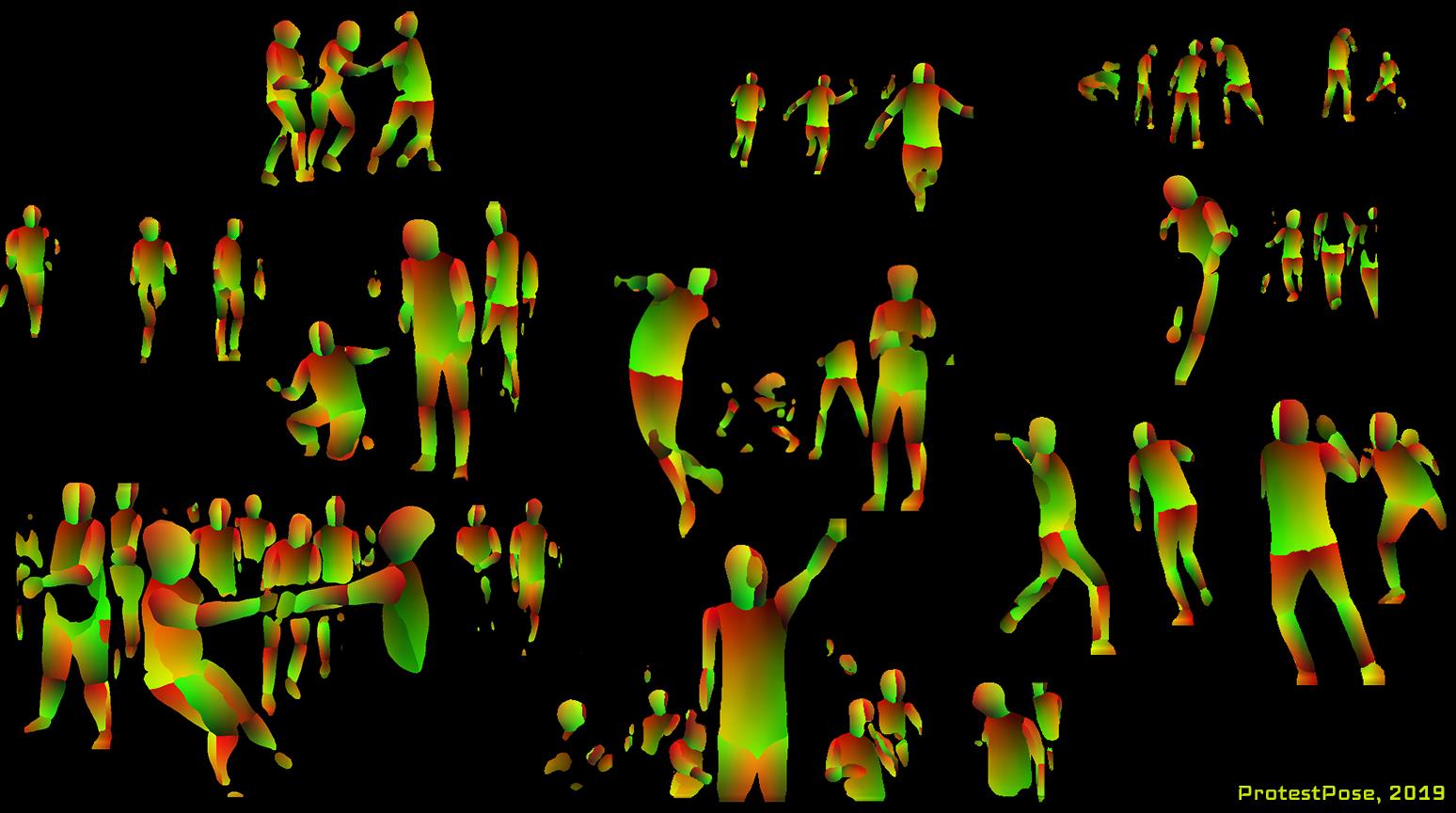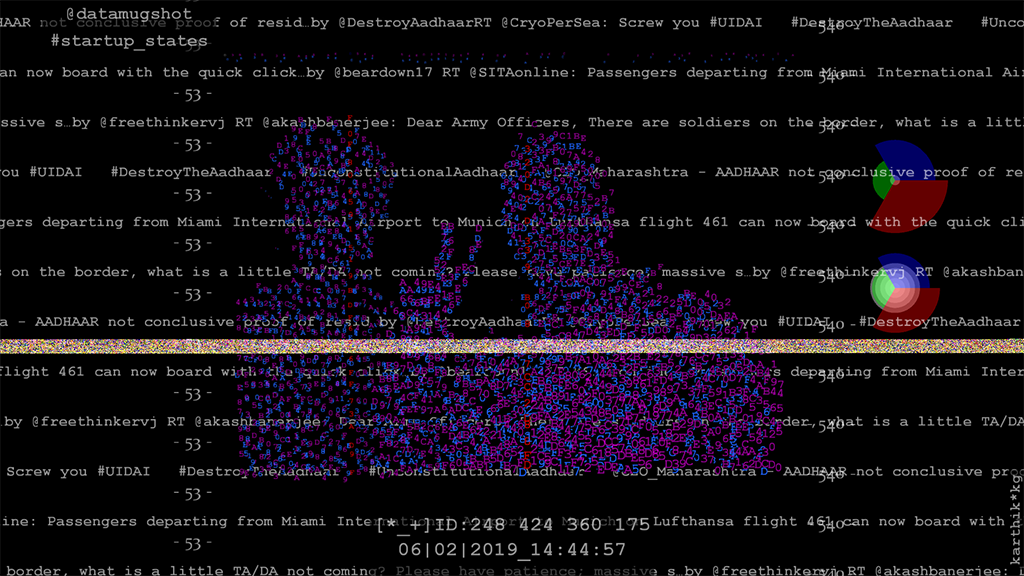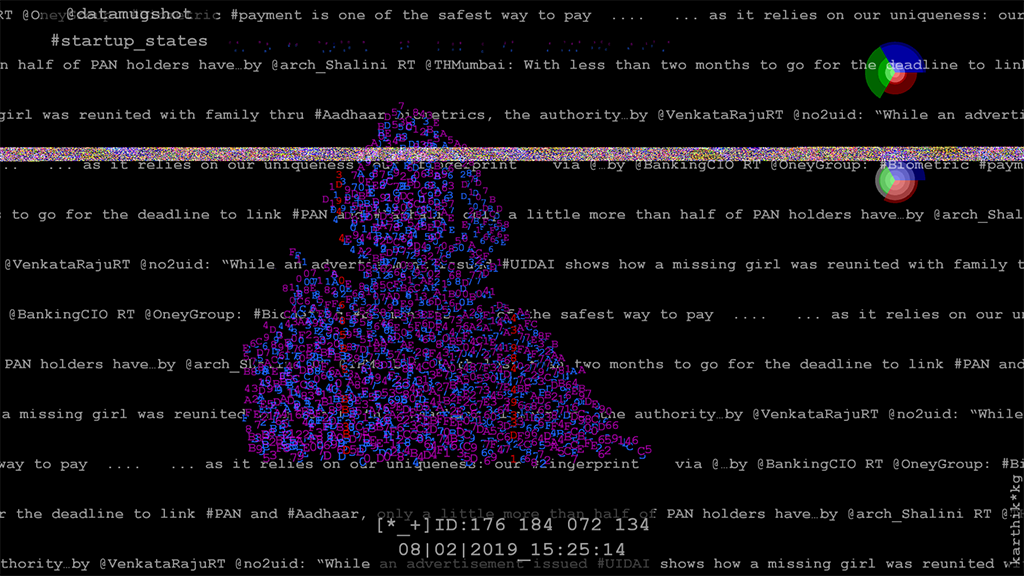On Biometric Data Collection: In Conversation with Karthik KG
In the first instalment of this conversation with media artist and researcher Karthik KG, we dwelled on the shifts in contemporary image production and circulation with the pervading presence of algorithmic processes on online platforms. In this continuing second instalment, we discuss the artist’s various projects that engage these ideas, as well as fuel his research around biometric data collection.

Mold to Modulation: Dusting the Fingerprints, Project Display, 2017.
AB: Could you describe your thinking and idea behind the Twitterbot ProtestPose? I noticed that the bot has now been taken down by twitter, but an archive exists on Instagram.How did you go about the process of making it, and why was it taken down?
The work Out of State stages an absurd conversation between four Twitterbots that intervenes in the political discourse on Twitter around Aadhaar, Digital India and the National Register of Citizens. Initially, when the National Register of Citizens and Citizenship Amendment Act bills were yet to be passed, they were starting to generate some conversation among the public but had not reached a point of contention leading to countrywide protests against the NRC and CAA. Around this same time, there were multiple protests around the world against the same, and the images from these protests were circulating on the Internet. In this, I came across a neural network model called DensePose that would identify the human pose from any image; hence, I decided to use this ML algorithm to generate human poses from the protest images and build a twitterbot called ProtestPose that would post these “protest poses” on Twitter. One twitterbot would retweet a post with the hashtags #aadhaar or #NRC or #CAA and the @ProtestPose would respond with one of the protest images run through the DensePose model. On day two of this work going live, the violence being levied against students had erupted in Delhi, and from then this twitter bot started actively tweeting the live messages around these state-induced outbreaks of violence and the multiple protest responses.
This bot was active and running for a month or two and then I stopped it. I am not exactly sure why the ProtestPose twitter account was suspended but over the years, the Twitter API regulations have undergone significant changes and become increasingly restrictive. At one level, the good intention is to stop the propagation of fake information, but there is also an active influence from the state in shaping these policies, which can be wielded as a potential tool to silence certain voices.

Protest Pose, Out of State, Web Art Project, 2019.
AB: In another project, datamugshot you overlay public discourse (on Twitter) regarding biometrics and Aadhar, onto the real time silhouettes of people viewing the installation—what does this kind of layering of information do? Could you reflect and perhaps deconstruct the layers of the final image that is created and circulated (both online and as a physical print)?
KK: Around mid-2016, Aadhaar was conferred the status of becoming a mandatory identity document, and this drew large controversies, questions were raised on the issue of privacy and the efficacy of the system from different quarters, and the government kept changing the rules around it. There were also incidents of data leakages and security breaches etc. Every day, every moment there would be new writing, new information and keeping track of this discourse had become a challenge. When I started working on the datamugshot installation, I was interested in dealing with this deluge of information and data; thus, I resorted to using the live Twitter feed of this public discourse around the hashtags #biometrics, #UID and #aadhaar. These real-time tweets were transformed into scrolling headlines (scrolling news tickers), which also acted as the grid against which the mugshot of the audience was framed. Instead of a regular camera, a depth sensor was used to capture the mugshot, and the depth details were visualised as the portrait of the person framed against the tweet grid. The depth sensor was capturing the biometric or quantifying the physical person in front but not with the intention of unique identification. In addition, this information was used to create an ID number and other details, seemingly establishing it as a pseudo identity document. This image then was uploaded to the Twitter account @datamugshot, and a physical copy was printed for the audience to carry with them. The installation space was filled with sound partially generated from the user and twitter data. The whole process of this interactive installation was based on the idea of allowing the audience to frame themselves against the ever-churning discourse on Aadhaar and be subjected to the creation of a pseudo identity document with these multiple layers of data visualisation and sonification.


Datamugshots, Interactive Installation, 2017.
AB: How do you see your work around identity and datafication with respect to the urgent activism it has also sparked within the country—from protests and public outrage surrounding Aadhar, to the protests against the CAA and the NRC?
KK: Protests over the last few years have become multifaceted. Digital technologies have offered varied possibilities of participation for anyone to show their support and resistance, for any cause. The role of social media platforms is undergoing a transformation from being a medium through which to share information, issue calls for organising, to enabling the organization and carrying out of entire protests just via the social media platform, like organised Twitter storms. In this regard, some of the works mentioned above have been a partial intervention. When they happened, it was not very thought-out or planned acts, they were more of an artistic response to the critical discourse around the issues of Aadhaar, biometrics, NRC, and CAA. The datamugshot work was showcased along with a public presentation of the research work on Aadhaar and biometrics, so this opened up a temporary public forum for a critical discussion of the issues at hand. I got to meet someone whose organisation was actively tweeting around these issues, and their tweets were appearing in the work which also opened up a space for discussion. The Out of State Twitterbots did not have any audience in particular, they played an active role for a period of time in retweeting some protest related tweets and gained some followers; all this was very unplanned, so it was interesting to see how each of these modes of operation had varying impacts.
All images courtesy of the artist.




